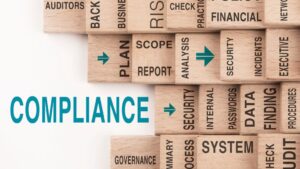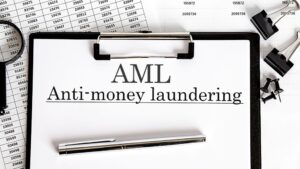Understanding AML Compliance Requirements
In the world of finance, compliance with Anti-Money Laundering (AML) regulations is of utmost importance. AML compliance requirements are designed to combat money laundering, terrorist financing, and other illicit financial activities. Financial institutions and professionals must understand the significance of AML compliance and the potential consequences of non-compliance.
Importance of AML Compliance
Compliance with AML regulations is critical for financial institutions to maintain stability and public confidence in the nation’s financial system. A robust AML compliance program ensures that institutions have proper controls and procedures in place to detect, prevent, and report suspicious activities. By implementing effective AML measures, financial institutions contribute to safeguarding the integrity of the financial system and protecting their customers from the risks associated with money laundering and illicit financial activities.
To support AML compliance efforts, regulatory bodies such as the Federal Deposit Insurance Corporation (FDIC) provide resources, documentation of laws and regulations, and information on important initiatives. The FDIC is a leading source of U.S. banking industry research, offering tools, reports, and data that are essential for financial institutions to meet AML compliance requirements (FDIC). Staying informed about the latest AML compliance requirements helps financial institutions enhance their ability to combat money laundering and illicit financial activities.
Consequences of Non-Compliance
Non-compliance with AML regulations can have severe consequences for financial institutions. Regulatory agencies have the authority to impose penalties and sanctions on institutions that fail to meet AML compliance requirements. The fines for non-compliance can be substantial, with the United States imposing fines of up to $24 million for financial institutions that fail to maintain an adequate AML compliance program. Larger financial institutions may face even higher fines (Financial Crime Academy).
In addition to financial penalties, non-compliance can result in reputational damage for financial institutions. The loss of public trust can have long-lasting effects on an institution’s business operations and relationships with clients and stakeholders. It is crucial for financial institutions to prioritize AML compliance to protect their reputation and maintain the confidence of their customers.
To mitigate the risk of non-compliance and the associated consequences, financial institutions must establish and maintain robust AML compliance programs. These programs should include comprehensive policies and procedures, ongoing training for employees, effective customer due diligence processes, and reporting mechanisms for suspicious activities. Regular audits and internal controls can also help ensure ongoing compliance with AML regulations.
Understanding the importance of AML compliance and the potential consequences of non-compliance is essential for financial institutions and professionals working in compliance, risk management, anti-money laundering, and anti-financial crime. By staying informed about AML compliance requirements and implementing effective compliance programs, institutions can mitigate risks, protect their reputation, and contribute to the integrity of the global financial system.
Key AML Regulations and Guidelines
When it comes to Anti-Money Laundering (AML) compliance, there are various regulations and guidelines in place worldwide to combat money laundering and terrorist financing. Understanding these AML compliance requirements is crucial for professionals working in compliance, risk management, anti-money laundering, and anti-financial crime.
US AML Compliance Requirements
In the United States, the primary AML compliance framework is established by the Bank Secrecy Act of 1970. This was the first major piece of anti-money laundering legislation passed in the country. It requires financial institutions to report certain transactions to the U.S. Treasury Department to detect and prevent money laundering activities (Investopedia). Additionally, financial institutions must comply with the regulations set forth by the Financial Crimes Enforcement Network (FinCEN), which is responsible for implementing and enforcing AML regulations in the United States.
European AML Compliance Requirements
The European Union has implemented several directives and guidelines to combat money laundering. The Sixth Anti-Money Laundering Directive (AMLD 6) sets out the AML compliance requirements for member states, ensuring consistency and harmonization across the European Union. Financial institutions must comply with AML/CFT Directives and guidelines established by the European Union and align with the recommendations of the Financial Action Task Force (FATF) (Dow Jones).
AML Compliance Requirements in Asia-Pacific
In the Asia-Pacific region, AML compliance efforts are influenced by various regulations and guidelines. Financial institutions need to align their AML frameworks with the recommendations and guidelines set by the Financial Action Task Force (FATF). These international standards help prevent money laundering activities and ensure a consistent approach to AML compliance in the region (Dow Jones).
AML Compliance Requirements in the Middle East
The Middle East also has its own set of AML compliance requirements. These requirements are guided by regulations such as the Financial Action Task Force Mutual Evaluation Reports, measures taken by central banks in the region, and specific laws implemented by individual countries. For example, Saudi Arabia has implemented its own Anti-Money Laundering Law, while the Central Bank of Kuwait plays a significant role in enforcing AML compliance measures in Kuwait (Dow Jones).
Staying up to date with the AML compliance requirements in each region is essential for organizations and professionals involved in financial services. Compliance with these regulations is crucial to mitigate the risks associated with money laundering and terrorist financing. By adhering to the specific AML compliance requirements in each jurisdiction, financial institutions can contribute to the global efforts to combat financial crime.
Implementing AML Compliance Programs
To effectively combat money laundering and terrorist financing, financial institutions must implement robust Anti-Money Laundering (AML) compliance programs. These programs involve a range of measures, including customer due diligence (CDD), ongoing monitoring, reporting suspicious activities, and establishing internal controls and procedures.
Customer Due Diligence (CDD)
Customer due diligence is a critical component of any AML compliance program. It involves verifying the identities of customers and assessing the potential risks associated with their transactions. Financial institutions must collect and verify customer information, such as name, address, and identification documents, to ensure compliance with AML regulations. The depth of CDD measures may vary based on the risk profile of the customer and the nature of the business relationship.
Ongoing Monitoring
Ongoing monitoring is essential to detect and prevent suspicious activities. Financial institutions must establish systems to monitor customer transactions continuously. By analyzing transaction patterns and conducting risk-based assessments, institutions can identify unusual or potentially illicit activities. Ongoing monitoring enables prompt detection of suspicious transactions and ensures compliance with reporting obligations.
Reporting Suspicious Activities
Reporting suspicious activities is a crucial obligation for financial institutions. If any transactions or activities raise suspicions of money laundering or terrorist financing, institutions must file suspicious activity reports (SARs) to the relevant regulatory authorities. Timely reporting enables law enforcement agencies to investigate potential financial crimes and take appropriate actions. It is essential for financial institutions to have well-defined processes and procedures in place to facilitate the reporting of suspicious activities.
Internal Controls and Procedures
Establishing strong internal controls and procedures is vital for effective AML compliance. Financial institutions must develop comprehensive policies and procedures that outline the steps for customer due diligence, transaction monitoring, and reporting suspicious activities. These internal controls should be designed to prevent, detect, and mitigate the risks associated with money laundering and terrorist financing. Regular audits and reviews help ensure that internal controls remain effective and compliant with regulatory requirements.
By implementing these AML compliance programs, financial institutions can protect themselves from the risks associated with money laundering and terrorist financing. These programs help ensure that institutions are equipped to detect and prevent illicit financial activities, maintain regulatory compliance, and safeguard their reputation.
For more information on AML compliance, you can refer to resources such as the Financial Crime Academy, which provides training and guidance on AML compliance, or explore the AML compliance solutions available in the market to assist financial institutions in meeting their compliance obligations.
Technology and AML Compliance
In the ever-evolving landscape of AML compliance requirements, technology plays a crucial role in helping financial institutions and organizations meet their obligations effectively and efficiently. By leveraging technology, institutions can streamline their AML compliance processes, enhance risk mitigation efforts, and stay ahead of emerging threats. This section explores the role of technology in AML compliance and the benefits of automating AML compliance processes.
Role of Technology in AML Compliance
Technology serves as a powerful tool in the fight against money laundering and illicit financial activities. It enables financial institutions to analyze vast amounts of data, identify suspicious patterns, and detect potential risks in real-time. Here are some key ways technology supports AML compliance:
Data Analysis and Monitoring: Advanced data analytics tools and algorithms enable institutions to monitor customer transactions, identify unusual activities, and recognize patterns that may indicate money laundering or terrorist financing. With the ability to process large volumes of data rapidly, technology enhances the effectiveness of transaction monitoring and reduces the risk of false positives.
Risk Assessment and Scoring: Technology facilitates the implementation of risk-based approaches by providing automated risk assessment and scoring models. These models analyze customer data, transaction history, and other relevant factors to assign risk levels to customers and transactions. By prioritizing high-risk entities, institutions can allocate their resources more efficiently for enhanced due diligence.
Enhanced Know Your Customer (KYC) Procedures: Technology streamlines the customer onboarding process by automating KYC procedures. Digital identity verification, data validation, and screening against watchlists are some of the features that technology offers to ensure compliance with AML regulations while improving customer experience.
Data Integration and Collaboration: Technology enables seamless integration of data from various sources within an institution, providing a comprehensive view of customer activities. This integrated approach enhances information sharing and collaboration among different departments, facilitating a more holistic understanding of potential risks and suspicious activities.
Automating AML Compliance Processes
Automation plays a pivotal role in simplifying AML compliance processes, increasing efficiency, and reducing human error. By automating manual tasks, financial institutions can allocate their resources more strategically and focus on higher-value activities. Here are some key areas where automation can be applied in AML compliance:
Customer Due Diligence (CDD): Automating CDD processes enables institutions to efficiently verify customer identities, perform risk assessments, and collect required documentation. This reduces the time and effort involved in manual reviews while ensuring compliance with AML regulations. AML compliance software solutions offer features such as identity verification, document management, and risk scoring to streamline CDD procedures.
Ongoing Monitoring: Continuous monitoring of customer transactions is essential for detecting suspicious activities. Automation allows institutions to monitor large volumes of transactions in real-time, flagging unusual activities based on predefined rules and algorithms. Automated monitoring systems can generate alerts for further investigation, ensuring timely response to potential risks.
Reporting Suspicious Activities: Technology simplifies the process of reporting suspicious transactions to the relevant authorities. Automated reporting tools enable institutions to generate accurate and standardized reports, ensuring compliance with regulatory requirements. These tools also facilitate the creation of audit trails, which are essential for demonstrating compliance during regulatory audits.
Internal Controls and Procedures: Automation helps institutions establish robust internal controls and procedures to ensure consistent adherence to AML compliance requirements. By implementing workflow automation and digital documentation systems, institutions can streamline approval processes, track compliance activities, and maintain comprehensive records for auditing purposes.
By embracing technology and leveraging automation, financial institutions can enhance their AML compliance programs, improve risk mitigation efforts, and stay ahead of regulatory changes. It is important for organizations to explore and implement suitable AML compliance software and solutions that align with their specific needs and regulatory obligations. This enables them to effectively combat money laundering, protect their reputation, and contribute to the integrity of the global financial system.
Resources for AML Compliance
To navigate the complex landscape of Anti-Money Laundering (AML) compliance requirements, financial institutions can rely on a variety of resources and organizations that provide guidance, training, and important information. These resources play a vital role in helping institutions stay up-to-date with the latest AML regulations and guidelines. Here are some key resources that can assist in achieving and maintaining AML compliance:
FDIC Resources
The Federal Deposit Insurance Corporation (FDIC) offers a wealth of resources, including documentation of laws and regulations, information on important initiatives, and guidance related to AML compliance requirements. These resources provided by the FDIC help financial institutions stay informed about the latest banking issues and enhance their ability to combat money laundering and illicit financial activities.
Internal Link: FDIC Resources
Financial Crime Academy
The Financial Crime Academy provides valuable insights and resources for financial institutions seeking to understand the consequences of non-compliance with AML regulations. With regularly updated content, including articles, case studies, and training courses, the Financial Crime Academy helps institutions stay informed about the severe penalties and reputational damage that can result from non-compliance.
Internal Link: Financial Crime Academy
FINRA Compliance Resources
The Financial Industry Regulatory Authority (FINRA) offers comprehensive compliance resources for financial institutions operating in the securities industry. These resources include regulatory notices, alerts, and guidance, helping institutions understand and implement effective AML compliance programs.
Internal Link: FINRA Compliance Resources
SEC AML Source Tool
The Securities and Exchange Commission (SEC) provides the AML Source Tool, a valuable resource for financial institutions. This tool offers insights into the laws and regulations related to AML compliance, as well as guidance on implementing effective AML programs. The AML Source Tool assists institutions in understanding their obligations and developing robust compliance procedures.
Internal Link: SEC AML Source Tool
FINTRAC AML Compliance Guidelines
Financial Transactions and Reports Analysis Centre of Canada (FINTRAC) offers AML compliance guidelines specifically for Canadian financial institutions. These guidelines provide detailed information on AML requirements, reporting obligations, and best practices for compliance. By following FINTRAC’s guidelines, institutions can ensure they meet the regulatory expectations in Canada.
Internal Link: FINTRAC AML Compliance Guidelines
By leveraging these resources, financial institutions can access the necessary information, guidance, and tools to develop and maintain effective AML compliance programs. Staying abreast of the latest regulations and guidelines is essential for mitigating risks associated with money laundering and maintaining the stability and integrity of the financial system.




